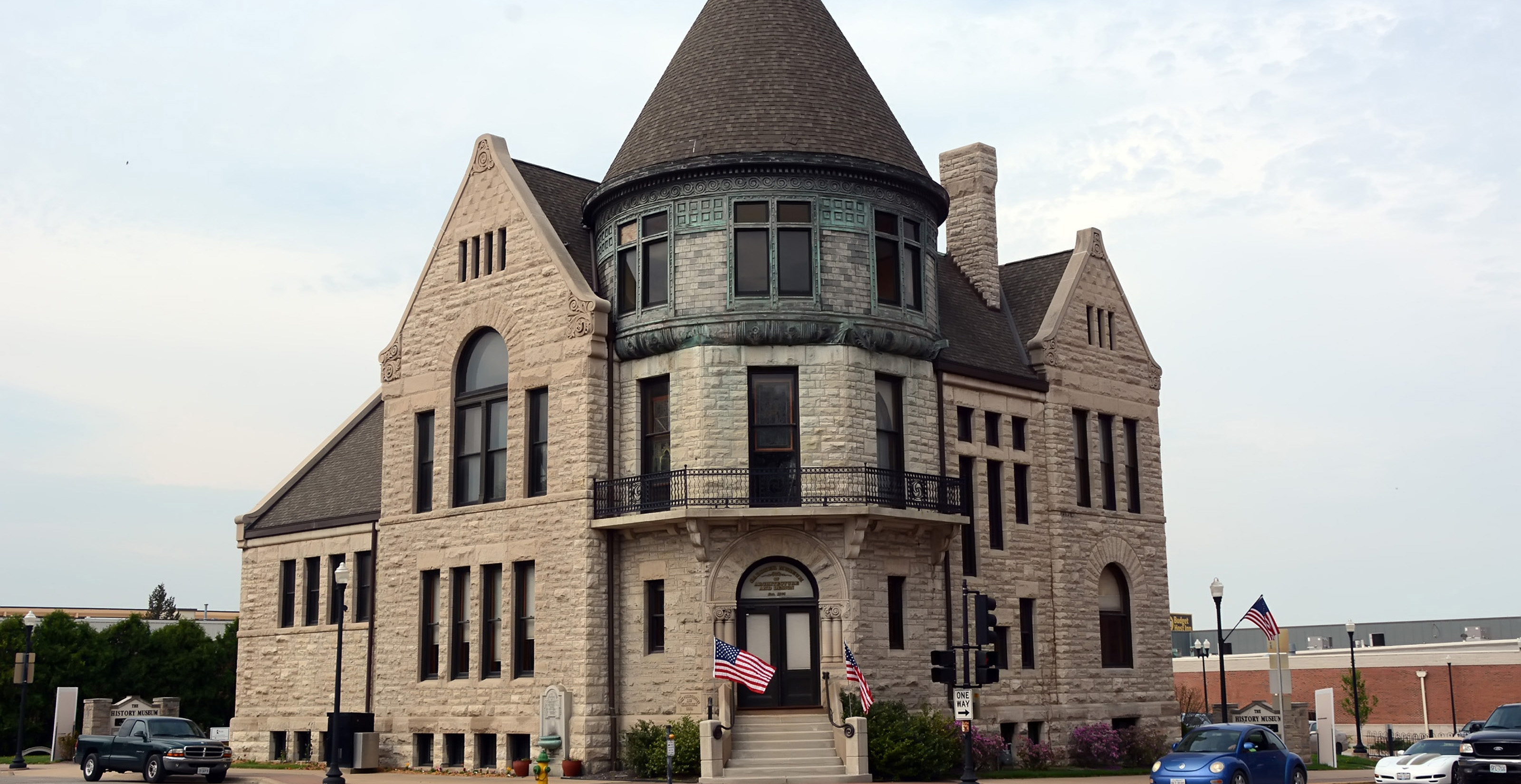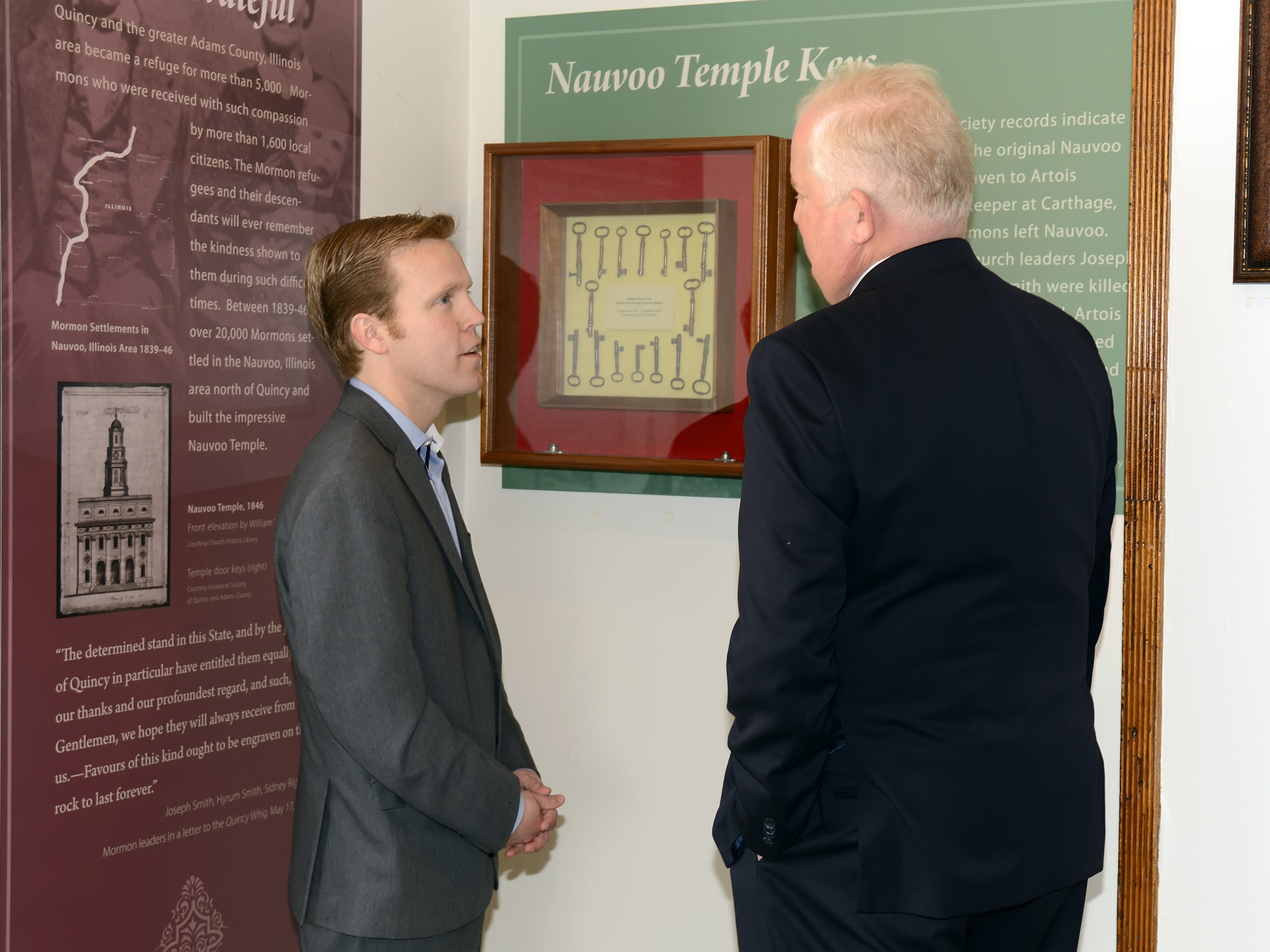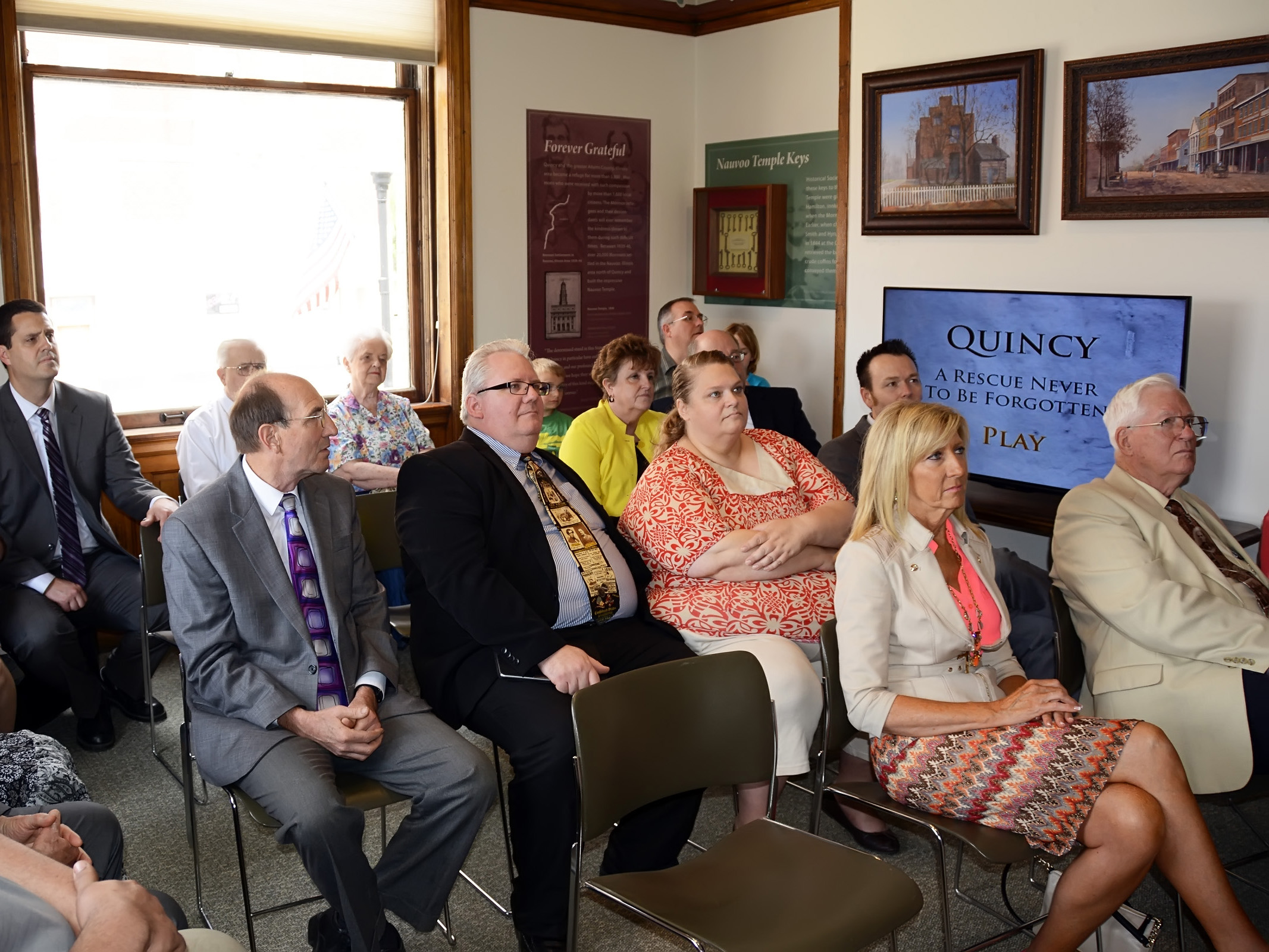Quincy Exhibit Honors Town’s Kindness to Mormon Refugees
Contributed By R. Scott Lloyd, Church News staff writer

The History Museum, newly established in Quincy, Illinois, is housed in a former public city library built in 1888. An attraction in the museum is the new Mormon History Room.
Article Highlights
- The 1,500 citizens of Quincy received and assisted over 5,000 Latter-day Saints after the Saints were driven out of Missouri.
- A room in the History Museum in Quincy has been devoted to telling the story of this kindness.
“Their story tugs at the heartstrings, but the compassion of the citizens of Quincy, who were far outnumbered by the incoming Saints, makes the story doubly poignant.” —Kenneth Mays, Mormon Historic Sites Foundation trustee
QUINCY, ILLINOIS
A heartwarming chapter in a largely unpleasant saga in the Missouri and Illinois periods of Church history is now memorialized in a museum exhibit paying tribute to citizens of this city, who in 1838–39 opened their homes and hearts to beleaguered Latter-day Saint refugees driven from Missouri.
A room in the History Museum in Quincy has been devoted to telling that story, thanks to a partnership between the Historical Society of Quincy and Adams County and the Utah-based Mormon Historic Sites Foundation.
“The refugee story is not well known among most members of the Church, but it is a very important and positive story from Mormon history,” said Michael L. Hutchings, a trustee of the foundation. “Many of us have ancestors that arrived in Quincy from Missouri during that winter of 1838–39. The 1,500 citizens of Quincy received and assisted over 5,000 Latter-day Saints in their time of great need during that cold winter. The Mormons were in need of shelter, food, clothing, and jobs and were received with great humanity. There was perhaps no greater time of need in Latter-day Saint history than in Quincy during that winter.”

Ribbon cutting for the History Museum in Quincy, Illinois, includes officers of the Historical Society of Quincy and Adams County and the Mormon Historic Sites Foundation. A later ribbon cutting was held the same day for the Mormon History Room in the museum. Photo courtesy of Kenneth R. Mays, Mormon Historic Sites Foundation.

In the new Mormon History Room of the History Museum in Quincy, Illinois, are Mike Hutchings, left, of the Mormon Historic Sites Foundation; President Chris Church of the Nauvoo Illinois Stake, who dedicated the Mormon History room; Chuck Radel, president of the Historical Society of Quincy and Adams County; and Larry King, executive director of the foundation. Photo courtesy of Kenneth R. Mays, Mormon Historic Sites Foundation.

Conducting a ribbon cutting of the Mormon Room in the History Museum at Quincy, Illinois, are Larry King, left, of the Mormon Historic Sites Foundation; Chuck Radel of the local historical society; Nauvoo Illinois Stake President Chris Church; and Mike Hutchings of the foundation. photo courtesy of Kenneth R. Mays, Mormon Historic Sites Foundation.

Mike Hutchings, right, of the Mormon Historic Sites Foundation, explains to Quincy Mayor Kyle A. Moore about the keys of the original Nauvoo Temple. Photo courtesy of Kenneth R. Mays, Mormon Historic Sites Foundation.

A group attends the ribbon cutting for the new Mormon History Room in the History Museum at Quincy, Illinois. Photo courtesy of Kenneth R. Mays, Mormon Historic Sites Foundation.

A poster publicizes the History Museum in Quincy, Illinois, and highlights Quincy’s history as a “city of Mormon refuge” in 1838–39. Photo courtesy of Kenneth R. Mays, Mormon Historic Sites Foundation.
While the Church members were streaming across the Mississippi River from the Missouri side to Quincy, the Prophet Joseph Smith and some of his associates were confined in the jail at Liberty, Missouri, the victims of oppression that included the issuance of the infamous executive order from Missouri Governor Lilburn W. Boggs that the Mormons be driven from the state or exterminated.
Later in 1839, Joseph and the other men would be released from custody and make their way to Illinois, where they would found the city of Nauvoo, some 47 miles to the north of Quincy. The kindness of the Quincy citizens gave the Church members the stability they needed to establish their new city.
The new exhibit is in a building that was constructed as a public library in 1888.
“It is situated kitty-corner to Washington Park in downtown Quincy, a site where many Latter-day Saint refugees camped,” said Kenneth R. Mays, another foundation trustee.
No longer suitable as a city library, the building was sold to a prominent Quincy family in 1974 and eventually donated to the historical society.
“Grateful to have the building, but severely challenged by the cost of renovation and upkeep, the HSQAC and city leaders approached the Mormon Historic Sites Foundation to see if they or the Church would have an interest in obtaining the building,” Brother Mays said.
The Church declined to pursue it, but the foundation decided to take a closer look at the prospect. Meanwhile, the historical society over several years raised funds to renovate the building and establish it as the History Museum.
“As part of the museum’s new direction, the Mormon Historic Sites Foundation has leased space in one of the rooms on the main floor dedicated to telling the moving story of the suffering Latter-day Saints who came to Quincy seeking refuge following their expulsion from Missouri,” Brother Mays said. “Their story tugs at the heartstrings, but the compassion of the citizens of Quincy, who were far outnumbered by the incoming Saints, makes the story doubly poignant. Led by the inspired compassion of city founder John Wood, the Quincyans opened their hearts and their homes to assist the struggling refugees.”
The historical society was established fundamentally to preserve the mansion of Mr. Wood, which likely housed some of the refugee Church members, Brother Mays said. “The society today is led by Chuck Radel. He and his staff have graciously worked side by side with the foundation in developing a room in the museum dedicated to this poignant chapter of Latter-day Saint history.”
Among items on display is a set of keys to the original Nauvoo Temple, which are now owned by the historical society. Professionally made interpretive panels explaining the historical events in the Quincy period of Church history are also in the room. And museum patrons can view a video produced by the foundation, made by Glenn Rawson and Dennis Lyman, who produced the television series History of the Saints.
A ribbon cutting for the History Museum was held on April 18. Mr. Radel and Quincy Mayor Kyle A. Moore cut the ribbon. Later in the day, a prayer of dedication of the Mormon History Room was offered by President Chris Church of the Nauvoo Illinois Stake.
A brochure produced by the foundation is available to visitors, listing some of the main events in the Quincy story and featuring a quotation from President Gordon B. Hinckley, which states in part, “In the annals of our Church, the city of Quincy and its citizens will always occupy a position of the highest esteem.”
